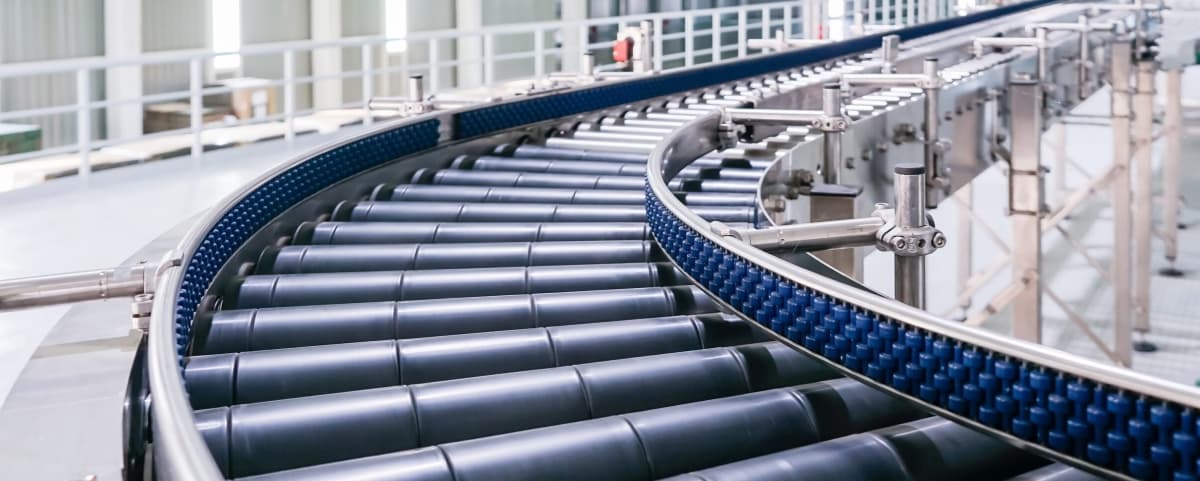Conveyor systems
Conveyor systems are used in industrial production and warehouses. The work of transporters is based on the continuity of action. They are classified according to the traction mechanism, the type of load-carrying platform and the nature of the transported goods.
There are two types of conveyors – belt and roller.
Unlike static storage systems, where people and special equipment ensure the movement of products, conveyor systems automate this process if:
- There is a production need to reduce the time of movement of goods to a minimum.
- In the warehouse, there are sharp jumps in turnover and people can’t cope.
- It is required to stabilize the cargo flow, normalize its direction and volumes.
- We need to reduce labor and human factors.
- There is a high risk of damage to the load when moving by hand. It is required to organize a continuous working cycle of cargo handling.
The design of conveyor systems is mostly simple and differs in the type of load-carrying mechanism, the presence of traction force (movement provides drive) or its absence (movement is provided by gravity or inertia).
- Belt conveyor systems
They consist of an annular load-carrying belt, support rollers, an electric drive that provides traction, and support elements. The belt is constantly moving, and the loads are moving along with it.
This type of conveyor systems is one of the most versatile. It is easy to adapt to different loads thanks to a wide choice of belt shapes and materials. For example, flat belts are suitable for moving boxes and single loads. And grooved and with sides – for bulk and small products. For non-food goods, rubber or tarpaulin covers are used, for food – textile (baking industry), mesh or special polyurethane (confectionery industry). If necessary, in the belt conveyor system, inclined and straight sections are combined for optimal cargo movement.
- Powered roller conveyor systems
They consist of rollers that rotate in bearings, an electric motor and a frame. The conveyor consists of sections. They can be rectilinear, curvilinear, folding, with rotary and pointer mechanisms. Each of them moves products in a horizontal direction or with a slight rise. Section length from 2 to 3 meters. Piece loads move on rollers, the length of which must be greater than the diameter of the load. Small loads are placed in boxes or boxes. The electric drive ensures the continuous movement of goods throughout the conveyor route. Conveyors in which the rollers are fixed at a small distance from each other are called roller conveyors. It is convenient to move goods in containers, boards, containers, piece large goods on them. Also available with or without drive.
- Chain conveyor
One of the most reliable types of conveyors. According to the principle of operation, it is similar to tape, but its working surface is not a canvas, but one or more chains. The chain conveyor is designed to work in harsh environments, such as high temperatures. Suitable for moving loose, liquid products, bulky, heavy loads. Differs in high efficiency and wear resistance. Of the minuses – the high cost of maintenance, the need for regular chain lubrication. Depending on the purpose, there are many varieties of chain conveyors: lamellar, scraper, bucket, etc.
- Spiral conveyors
This type of conveyor is designed to move goods up/down. Unlike roller and tape analogues, they take up a minimum of free space. In one hour, the spiral conveyor is capable of lifting / lowering up to 2.6 thousand units of products.
- Gravity Conveyor Systems
They can be equipped with brake rollers on spring-loaded swing arms to reduce shock loads that occur at the moment the load is transported along the conveyor.
- Free rotation conveyors


